Best Games Of 2013: Luke Shaw
Published on December 30th, 2013 in: Best Of Lists, Gaming |I should start by going out of my way to elaborate that this is not a best games of the year list, or any other such nonsense. I don’t own every console, I barely played a quarter of the year’s releases, and I spent a disproportionate amount of the year on older games like S.T.A.L.K.E.R Shadow of Chernobyl.
Instead, I’m just going to write about things that I wasted my time playing this year, and why I am not sad I wasted my time doing so. The only real theme to this list is impact: anything that engrossed me for a sufficient space of time, or something that resonated deeply, or long after I finished it. I have included the three biggest critical releases of the year, not just because I enjoyed them but because they did a lot of things wrong. Regardless they deserve to be talked about and weighed into any discussion like this. I regret not being able to play tantalizing releases such as Gone Home and Papers, Please but I am no journalist and my time and money are limited. There is an overall winner, but it is only taking that spot due to the sheer lunacy of the hours invested.
Bioshock Infinite, Irrational Games (PC)
I’m not going to say much about this game as tens of thousands of words have been spilled over it already, and although I enjoyed it, I have a lot of reservations now. It might be one of the greatest expressions of artistic intent in any video game, though, with a beautiful city and a wonderfully imagined world. Sadly, a few major niggles came to my mind when I watched my SO play through it again, namely around pacing and the like.
I will go on record, however, saying that the start of the game up to and including Battleship Bay is one of the most exquisitely brilliant pieces of game I have ever played: music, visuals, gameplay, and story all bound together in such a fantastically elegant package that I wanted to die from exhilaration when Booker was finally lying on those artificial shores.
I even have a soft spot for the ending.
Monaco: What’s Yours is Mine, Pocketwatch Games (PC)
I’ve already written three times about this so I’m just going to cheat and nick a paragraph from my review and plonk it here.
“. . . the true joy of Monaco doesn’t always lie in the perfect heist. Whilst traveling through a level like a team of shadows is a wonderful hit, the sustained high comes from the complete opposite. Truly, the only thing better than perfection is chaos. As a perfect plan fragments into four players skittering through Mansions teeming with guards and Art Galleries full of snobbish guests, you can’t help but be swept away by the thrill of the chase that evokes feelings of PacMan, if Blinky, Pinky, Inky, and Clyde had toted pistols and machine guns. As each planned execution turns into a blunder that cannot be contained as it spreads across the entire floor, hurried fumbles alerting yet more guards and more guns to the scene, and hiding places become scarcer as everyone scatters like cockroaches from the light of the security guard’s torches.”
It’s brilliant. If you haven’t played it with a full group of four, you’re missing out on a whole bag of chaos.
DmC: Devil May Cry, Ninja Theory (PC)
I love this type of game, so there are two of them on the list. It is unfair to every other type of game, because they can’t ever hope to match the exact thrill I get from ridiculous combos or hyper-quick last minute dodging. DmC was cursed from the off. “Dante has changed!” was the cry. “He’s emo!” they said, or something. As if the brash, platinum-haired cliché surfer dude who also just happened to be the devil’s son, and thus manages to pile an extra layer of doesn’t-give-a-fuck on top of the prerequisite core of surfer-bum-no-fucks-given is the epitome of hot characterization, ugh, end sentence.
DmC is from Ninja Theory who make games that are pretty, colorful, characterful, and full of visual trickery and nuances that make you smile. All of those traits are in DmC in full force: it’s gorgeous and witty; it plays with level design to fit in neat thematic elements; it plasters buzzwords in impact font across the strange environments in a way which is particularly sixth form, but who cares? This is a game about a cocky teenager hitting things in the face with a sword that is too big for him and it always feels too big. Every weapon feels like Dante is on the brink of losing his grip at the end of a ridiculous combo. He staggers from the force of the follow through from his own blows; he loses balances and executes enemies with ridiculous overkill.
It’s the perfect prequel for DMC and I’m glad they got their heads down and ignored the mewling masses. The combat is not quite on a par with DMC3, but it’s a neat system full of invitations to switch up the flow of combat with easy access to the five main weapons and a duo of grab moves that allow you to get up close or draw an enemy out of the crowd. Its lurid excess was a great start to the year, and all the unhappy people got blonde Dante back at the end. Oh no, spoilers!
Risk of Rain, Hopoo Games (PC)
Rogue-like-lites (or whatever the name of choice is these days) are a strange beast. They frequently ask the player to methodically pick their way through death dungeons, weighing up each and every encounter meticulously before progressing. Risk of Rain flips the idea on its head: the game gets harder the longer you take, but by the same stroke the more time you spend in a level gathering cash, the more chests you can open, and the more powerful you get, inevitably leading to longer survival times.
Although touted as randomized, only placement of the end level teleporter and number and types of item seems to be truly random. Enemy types are consistent between levels, occasionally spawning as tougher, angrier, flame-spitting versions of themselves, whilst bosses are usually predictable, even if it might throw five of them at you at once. The fun stems from playing as the varying character classes, each with their own abilities and strengths which promote synergy with different item types.
Playing solo is a challenge, but co-op is where Risk really shines, forcing you to make snap decisions about who needs what item and why, learning to work together to get through the game fast and efficiently, until you are so powerful you can indulge the game’s invitation to go back to the start and play it all through again on a tweaked difficulty setting. Layering items on your character to encourage different play styles is a great twist on the frequently reserved tactics of the average rogue, and as a class-based brawler, there is a surprising amount of depth to be found. The best part, though, is the chaos on screen, watching the frame rate counter drop to single digits as the game throws hundreds of enemies and bosses at your hero, barely ten pixels high, all twig legs and tiny guns, reducing them to piles of coins and experience points whilst numbers spring out of every point on the screen. It’s the most chaotic rogue-lite game you’ll ever play, brilliantly lo fi and charmingly angry at you for daring to do well.
Pokémon X (and that runt, Y) Gamefreak (3DS)
Pokémon has long been the warm blanket of gaming. As a man of 26 years old, a “’90s kid,” and other such rubbish, Pokémon has been with me since I was a child. I’ve grown up with the series and fallen in and out of love with it for various reasons, like when it stopped doing its hair the way I liked it, and when it decided that it wanted to ditch me for another 150 guys who I didn’t know.
X (ugh, and Y) are not a reinvention, or a revolution, or anything that makes them truly worthy of featuring on any serious, hand-wringing “game of the year” list. Instead, they are a pair of rose-tinted glasses that give you a lovely head massage when you put them on, making your worries disappear into a beautifully realized dream of fully rendered 3D Pokémon with lovingly detailed attack animations.
That is literally all the game is. It’s Pokémon, but everything is softer around the edges. The difficulty inherent in the Pokémon grind has been offset by a wondrous machine that lets you share EXP amongst your crew. No longer must you train a battle-hardened posse of six vicious wee beasts with specific type coverage, only pausing to grind up a Bug type you’d left languishing in a box because of that bastard Psychic gym, no! No more! Now you can experiment; you can have around 16 different Pokes on the go and rarely feel pressured to grind. You can take chances on weird and wonderful Pokémon just because you like the look of them.
Finally, you can truly adhere to the series ethos that the best trainer is not one who puts his friends through grueling training camps, but is instead a person full of love for these magical beasts. It is finally tailored for a person who loves a deer with crystal branches for antlers so much that he is willing to train him to stay in the party forever, not because the deer can one-hit KO pretty much any other of the near 750 Pokémon on show with his ludicrously overpowered Moon Blast attack. No, not at all. It’s because that deer is a wonderful snowflake of a creature and you can finally accommodate him in your party without remorse.
And for that, X, I am truly thankful. At last I get to be the master I always wanted to be, and feed my Pokémon macaroons in celebration. I am now the best, the best there ever was.
GTA V, Rockstar Studios (360)
I can’t not talk about GTA V, because I enjoyed it. I hated a lot of it, but I also enjoyed it. Rockstar (R* to my fans, yo) managed to create an outstanding world, a technological marvel of perfect sunsets, smoke and mirror views of the city at night, and pastel-rendered mountains in the distance. It’s one of the most aware combinations of art and technology I’ve seen, masking its limitations in artistry to make the world feel complete. It’s a genuine pleasure to simply drive around in a world, soaking up the atmosphere and rarely feeling hoodwinked by the fact it is a game unless you’re a stickler for a handful of fences popping in every now and then.
It’s a shame, then, that it’s so hollow and artificial; so many buildings that look like areas to explore instead just end up being Hollywood sets. Maybe there is some meta commentary at work there, but I doubt it. I just think it’s a generation too early, but the ambition is at least there. I played the story at a brisk place and I found it fairly engrossing; at least I found the drive to get to the next heist enough to carry me through unhindered.
The writing was, frankly, all too often average, but it was at its best when allowing the characters to play off each other on long car rides between missions: the all-American road trip is clearly alive and well. Missions are much improved, too. Rarely did I ever feel like I was going to fail, but with all its aspirations to film and TV, I shouldn’t have ever wanted to fail, which works in GTA‘s favor. Variety abounds (as much variety you can wring out of 1. drive from A-B and 2. shoot the mens) in that at least each mission has a particular flavor, all of them aping well-trod mainstays of film and TV such as heists, shootouts, and raucous car chases.
It is, again, a shame that it’s so hollow. GTA V is a body without a soul. Everyone is deplorable and that charms to a point before getting stale when you fail to find shelter from the vacuousness of it all. Satire can’t cover the myriad sins on display here. I can’t claim to be too offended by anything on show in V, though, as I’m numbed by its crassness at this point, but it really isn’t as ground-breaking on the writing front as a game of its scope needs to be to secure the status it desires. I’ve a feeling they will crack that code one day, but today is not that day. It’s telling that the greatest parts of the game are the unleashed satire available on the various radio stations where real comedians and writers get to flex their chops and deliver some hilarious material. Dr. Ray De Angelo Harris’s (voiced by J. B. Smoove) Chakra Attack manifesto is my absolute favorite section of dialogue in any game this year, for sure.
Monster Hunter 3: Ultimate, Capcom (3DS)
I don’t want to go on for too long about this as I’ve only spent 80 hours on it and therefore have only just finished the Low Rank quests. That’s a third of the game, less even. There is High Rank, and the legendary G-Rank yet to come. Truthfully, I don’t have the patience for the grind. I am bad at that kind of thing, but the bit where you hit monsters in the face so hard that they comically come off the ground and crumple into a pile mid-charge? I have infinite patience for that part.
Monster Hunter has a long legacy of being obtuse (as Japanese games can be at times), full of irritating systems that barely had an excuse being around on the PS2, let alone in this modern age of streamlined slickness. That might be a large part of the charm, though. Everything is so backwards that even working the game is a challenge, and somehow, with enough patience, it settles in your brain and becomes simple and second nature. Preparing for a hunt and managing the village all become small parts of a routine. The systems are the obfuscating front end of the show, but the real meat is always the hunts. That the 3DS has the grunt to unleash these terrifying beasts is inspiring. It’s also the only game I’ve played on the handheld where I’ve felt headphones are mandatory, just so the screen-shaking roars of each monster are properly experienced.
Each critter, be it small or gargantuan, has its own weaknesses, attack patterns, and specific Achilles heel that you are free to tackle however you please. You can smash its craggy armor to pieces with clamorous blows form a hammer made from the skull of a dragon, or you can hunch behind a shield and poke its vulnerable underside with a lance that you’ve carved from the horns of some unmentionable serpent. The choice is truly yours and you are neither rewarded or penalized for any approach. You can even sit back and pick monsters off with bows. The only limits imposed are your own desire for variety.
The sandbox style attitude to the fights is reinforced by the way the monsters can bugger off mid-fight to heal, sleep, or eat; or the way that other monsters can join in the ruckus leaving you to run away and try and find somewhere to recuperate before deciding on which beast you fancy taking down first. The environment also plays a huge part, and learning each of these nuances is more exciting than a thousand headshots. If only it wasn’t such a bloody grind, I’d probably still be playing it today, but I gather that Monster Hunting isn’t an easy activity.
Metal Gear Rising: Revengeance, Platinum Games (360)
My hands had barely recovered from mashing away at demons and then suddenly Raiden is here asking me to help him cut robots to pieces. It’s rude, but at least he has white hair and looks RAD instead of EMO. Lesson learned Ninja Theory. Platinum Games will always hold a special place in my heart, but they aren’t flawless. Mad World was fairly uninspiring—bold visual design aside—and Anarchy Reigns felt like a mess from the little I played. Kojima’s effeminate antihero-cum-swiss-army-ninja-cyborg, er, Raiden takes center stage in a game that’s purely ridiculous and terrible in many ways, but not in any way that matters to me at all. Like Raiden, it is not beyond redemption, mainly because it has a whacking great sword in it.
Revengeance is all about going full at it: getting into combat and never stopping. After the parry and combat clicks, you’re just a whirlwind of death. You could probably parry God himself once you learn the correct timing. Once you’re fully upgraded, the game becomes an incredibly cathartic experience, and perhaps the world’s first julienne simulator, except instead of vegetables you’re applying that world famous culinary technique to the bodies of cyborg soldiers, cyborg dogs, and other robots. The boss battles present the only stopping points, the beef sirloin that you need to swap knives and styles for, over the top being a theme of the game from the opening minutes (running along the back of a 10-story robot) right up until the very end (fighting a metal man who is basically a wrestler channeling Ric Flair levels of over the top charisma and ringside speeches). The bosses stand up to scrutiny on the “well, is it nuts?” scale. I should know; I spent about 12 hours straight trying to clear the “take no damage during each boss fight on hard” achievement. The game is responsive enough to enable this, and that’s incredibly pleasing. To hit the zone, to manage to parry and dodge attacks that are faster than the blink of an eye is exactly what this kind of game is about. That, and the ridiculous counter attacks you get to unleash on your enemies, leaving them in scattered piles on the floor.
There is a plot in there about organ smuggling, child smuggling, government (?) world economy, war economy, what it means to be human, and all that melodramatic jazz that is so ridiculous it hurts. But it doesn’t really matter. It’s just an ‘80s manga backdrop to the most ‘80s of action games, a game where a katana can literally cut a tank in half. Perfect.
The Swapper, Facepalm Games (PC)
It has been a big year for big games, and an even bigger year for small indie productions. In fact, the last three years or so have proven to be a sort of halcyon age for small studio productions. Yet for each Hotline Miami that gains notoriety, a beautiful gem of a game falls between the metaphorical floorboards of hype and coverage and is forgotten in the dark. The Swapper is exactly that gem, one of the most surprising and touching games I have played.
Set on a mysterious abandoned space station, The Swapper is a terribly titled game that delves deep into the mind with mechanics and story that all tie together to investigate the ideas of consciousness and the soul. The player soon finds a device known as The Swapper which allows them to create clones of themselves and “swap” between them. All of the clones stay in step with the original, only stopping when up against an object or falling to their understated deaths. Multicolored mists and gravity platforms add layers of complexity to the simple premise and the puzzles begin to unravel various parts of your brain with their nightmarishly elegant solutions.
The troubling headaches you’ll receive from trying to solve them aren’t the reason this game deserves praise, though. It is a sublime audiovisual experience. The environments and characters are hand crafted, using clay and cardboard to create one of the most fantastically realized Sci Fi worlds I’ve ever seen in a game, and the audio is suitably haunting, which adds to the already foreboding atmosphere created by the cryptic text logs you find on your travels. Every part of the ship echoes and creaks in its abandoned state, the only company your voiceless clones and the mysterious multiple-personality ridden Astronaut who always appears to be just one step ahead of you, calling to mind the Varia Suit clone encounters in Metroid Zero.
Except that isn’t quite true: you’re only alone in the sense that you have been abandoned by consciousness that you can comprehend. Strange rocks inhabit the station, mysterious stones called Watchers, the cause of the demise of the erstwhile crew. Unable to speak, these lumps of rock are instead telepathic nodes that render your screen static and text as they try to understand the invasion of their world by a mysterious interloper. As with all great Sci Fi, they are an intelligence outside of human understanding, until the titular swapper device changes the very idea of what a person is, what a soul is, and how consciousness may work.
As with The Last of Us, The Swapper really makes brilliant use of its narrative premises, weaving gameplay ideas into the theme in a way that elevates it beyond a puzzle game with a neat, mechanical hook, and into something akin to an existential novel, utilizing its framework and gameplay to ask the player to seriously ruminate on the ideas that are presented to them. Featuring a surprisingly downbeat and thoughtful ending, the slight scraps of story and theme work so well with the mechanics that I have thought about this game nearly every week since I finished it. It is simply that good, and criminally underappreciated.
The Last of Us, Naughty Dog (PS3)
Like Bioshock Infinite, there is a lot that’s been written about this game, too. I feel unqualified to talk about it as I only played through it once, but it was an emotional experience. More than any game I’ve previously played, this felt like a high quality TV show, a game taking its cues from the evolution of the dramatic TV series. Each season was its own series, comprised of episodes that alternated between action, tension, and serenity.
The highest platitude that I can give this game is that the sections I remember the most rarely involve combat. Just walking around houses, soaking up the hollowed-out house mise en scene of lives abandoned in a hurry. The verisimilitude evoked by overgrown suburbs and abandoned universities was excellent. Few games dare let you wander around in silence, and even fewer games manage to pull it off so that it feels integral.
Joel was a character that was a joy to inhabit. As stereotypical as he was, he felt real in a way that few other avatars of poly-maps and bump-mapping ever manage to be. The way he touched walls and accommodated Ellie in his arms whilst trying to maintain cover were tiny details that made the world feel so much more physical. This level of world crafting is something that is beginning to separate more thoughtful projects from the standard AAA practice of standard Hollywood action template.
Although essentially as linear as most big budget productions, the attention to craft on hand in The Last of Us manages to turn a simple corridor structure into a world of substances, deftly utilizing the post-apocalyptic setting to account for the barren landscapes and lack of meaningful interactions between fellow humans that don’t descend simply descend into firefights. The stark contrast between these encounters and the brilliantly sketched individuals that are met, and those whose stories you are simply left to discover through the environment, shows a great maturity in the marrying of narrative elements and the diegetic world of the game.
As a dramatic story, Autumn and Winter showed a kind of maturity that is rare in big budget game productions. There were plot choices there that felt excellently realized rather than the result of focus group pow-wows, and sections that felt authored rather than designed, which is probably the highest praise I can think to bestow on a game’s narrative.
The gameplay has frequently come under fire, but aside from the final section I can think of no issues that really made an impact on my enjoyment. Bullets felt like damaging nasty chunks of desperation fired by those with no other choice and the melee encounters were suitably robust and occupied a real space in combat. Each fight felt like Joel was hanging on tooth and nail, desperate to shield the candle of hope from a world undone by nature, a man fighting to accept that the ecological disaster that the world had wrought on them may have been a just punishment. An invitation to accept that survival wasn’t the answer and co-operation was the key, with a story beat that stayed with me long after the credits had rolled.
XCOM: Enemy Within, Firaxis (PC)
This might be considered a bit of a cheat as it isn’t a game; instead it’s an expansion pack that fundamentally changes the first half of the game to a large enough degree that I am going to include it anyway. Thank you and good night.
Enemy Within is about one thing, and one thing only: MECs. Huge suits of robotic armor that let you punch aliens right in their weird faces. To use one, you have to amputate a soldier’s limbs and give them artificial robot limbs whilst furrowing your brow, taking a sip of whiskey, and muttering about the inhumanity of it. I imagine it goes something like this:
“What are we doing to our soldiers? Is this what we must do to win this war? Is the cost too much?
* a pause, a fist slammed into a table*
“Dammit, it’s too far! Engineering, shut down the project, the cost is too hi- wait. . . what’s that you’re saying?”
*my mouth opens wide, cigarette stuck to my bottom lip, I am Dan Aykroyd*
“You can punch an enemy in the head so hard he’ll go through a bloody wall? Why the hell are we wringing our hands over this? Amputations! Amputations for everyone!”
And that is the gist of why Enemy Within is so great. You get to become a cackling despot who chops up his elite soldiers and splices their bodies with alien genetics or man-made hell machines. The dynamics of XCOM‘s incredible tactical turn-based combat are shaken up with aggressive aplomb. Meld, a temporary resource occurring on most maps, forces you to overextend and get into situations that require a keen tactical mind to extricate yourself from, or you can just use a MECs ruddy great cannon to blow up a car and kill everything. As always with XCOM, the choice is utterly yours.
The campaign structure is now fleshed out with some brilliant mission additions, too. The shady fedora-wearing EXALT field their own genetically modified soldiers against your elite force, challenging you to shut down their covert operations to prevent your infrastructure from taking heavy losses and giving you a reprieve from fighting the xeno hordes. Whilst limited in scope, they make a refreshing change from the regular pace, as do the excellent scripted missions, such as the heavily Aliens-inspired raid on a suspiciously abandoned fishing village where a whaling ship has run aground with some deadly cargo.
Primarily, the reason the expansion is so much fun is down to the stories XCOM builds on the fly. No amount of scripting can ever replace the feeling of pulling off a last minute critical against a raging enemy, and the rebalancing of certain enemies such as the towering Sectopod robot finally make a lot of fights feel truly threatening. The Mectopods, the alien invaders’ response to the MEC, are also suitably brilliant, encouraging quick retreats and tense last stands as they cut a swath through the cover standing between you and them.
Although it isn’t a fully fledged game, it’s an excuse to extol the virtues of XCOM all over again, its beautifully pitched atmosphere truly making you feel like Earth’s last best hope in a way that no AAA first person shooter has ever managed, and how could they? How could one faceless man ever replace the space in your heart dedicated to a squad of the six toughest men and women in your command? Regardless of how much of their humanity you’ve taken away, they are still yours.
Dota 2, Valve (PC)
There could only ever be one game of the year for me, and it’s probably quite fitting that it’s technically ten years old. Dota is still something rare, an almost new genre in a landscape stagnating with retreads. It has a complicated history and an even more complicated system of mechanics that I would struggle to cover, so I won’t even try. Instead, I’m going to rant and rave about it and all the things it is to me beyond a game, even though I consider myself a truly casual player.
Dota is beautiful. It’s one of the most exquisitely detailed games I have ever seen, and as this iteration was developed under the watchful eyes of Valve, I am not in the least bit surprised. There is only one map, but it is bristling with tiny details, and despite the insane number of heroes available to play (105), they are all animated by masterful hands. From tiny details in each attack, they perform to the way each character stumbles/flies/slithers/scuttles around when mortally wounded; the level of polish is unprecedented. They all have a personality, and they all bear grudges with each other, calling out unique taunts during battle in a way that intensifies makes me want to draw Dota fanart and elevate myself to the next plane of fanboy.
Each game is a nearly hour-long affair that requires tactical thought before you’ve even picked your character, making sure you chose someone who is relevant to the rest of your team but not countered too hard by the opponent. There are multiple roles per character: you can play support or go on the offensive, be the person who initiates fights, or roam the map picking off weak characters. The choice is yours and Dota gives you the tools to do all of the above with hundreds of items all helping you tweak your character to a certain role. It’s like re-rolling a new character every time you pick them.
Most importantly to me, it’s a social game. I play it with people who I have become friends with, spending hours in their company learning how to grit my teeth and put up with defeat and also how to just plain let go and enjoy myself during what is usually an intense experience. I can only assume that this is what people who enjoy sport feel like. I have watched Dota tournaments, although I have never watched a single sporting tournament from start to finish as I have little comprehension of the rules and mechanics. With Dota, I have first hand experience and I think I finally grasp why people get so excited over clutch games in tennis or football. Playing Dota is like playing a sport; it’s intensely competitive and requires practice, team play, and inherent knowledge of all tactics and the “meta-game” at large.
No other game has sunk its teeth into me so brutally, with over 300 hours on record since May this year. I’ve found an experience so deep, so all consuming, and so full of moments of joy and despair that I don’t really care that it has a bad reputation with being a fiddly mess to a lot of outsiders. I don’t care that people laugh at the idea of it being anyone’s game of the year, or the way people ridicule it and its tournaments. It just doesn’t matter. It is as ridiculous to an outsider as football is to me, and it is ultimately as pointless, but it has inspired friendships and I’ve talked about it over a pint. I’ve discussed tactics and infamous plays in the same way people lament losses and commend exceptional performance in the World Cup. I’ve found a niche that I feel vaguely attached to, somewhere that I know I’ll forever find my interest piqued by new heroes or patch notes that change the way the game plays.
Dota isn’t just a game, as cliché as that must sound. It’s a genre-defining experience, a new rule set and group of mechanics that don’t exist inside a previous sphere of influence. It is truly unique, despite referencing countless RPG, RTS, and Tower Defence mechanics. It’s a total experience, one that is probably impossible to exhaust in 3,000 hours, let alone 300. It is easily the best and most expansive game I have played this decade. It is a towering achievement, and yet somehow it remains buried on the edge of perception, played by nearly half a million people but considered a niche experience. It is a testament to the grand scale of the videogame industry, that such a colossal and detailed product can be unknown to so many.
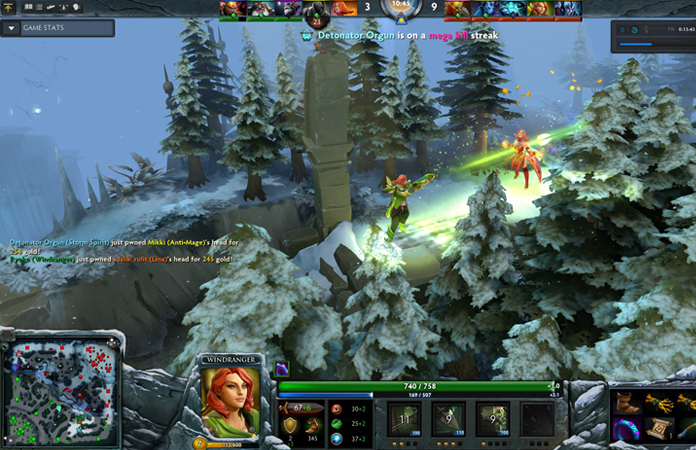
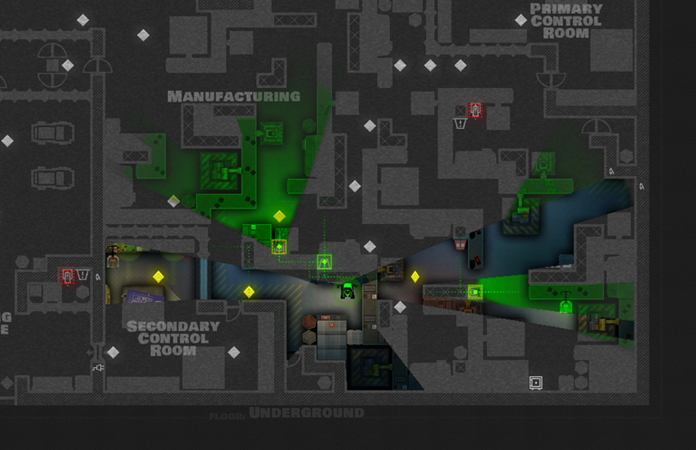
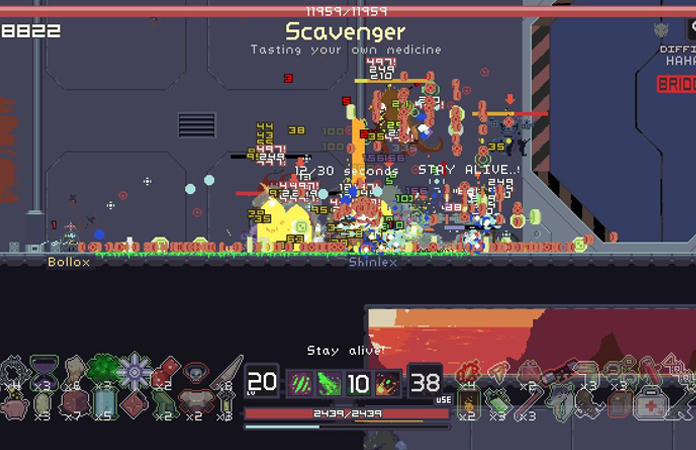


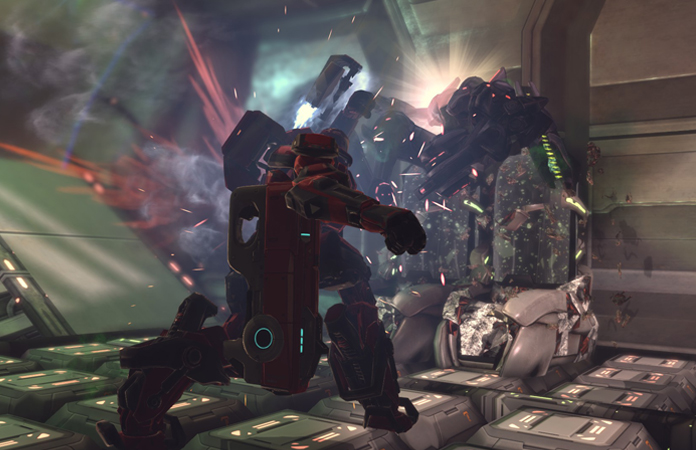
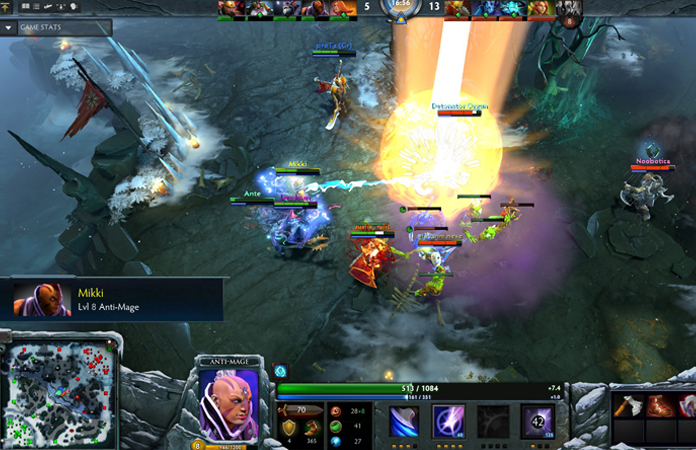
Time limit is exhausted. Please reload the CAPTCHA.